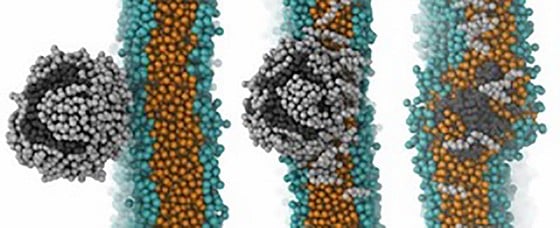SGGP
Microplastics (also known as microplastic particles) have been shown to enter the bloodstream, lungs, and placenta through food, fluids, and other substances consumed by humans.
 |
| Model showing plastic and cholesterol molecules crossing the blood-brain barrier. Image: NANOMATERIALS |
However, according to the results of a recent study published in the journal Nanomaterials, a team of researchers from Austria, the United States, Hungary, and the Netherlands discovered that MNPs can penetrate the brains of mice. They introduced polystyrene particles (a common plastic used in food packaging) of three sizes (9.5, 1.14, and 0.293 micrometers) labeled with fluorescence and mixed them into the drinking water of mice. Green fluorescent signals of 0.293 micrometers were detected in the brain tissue of the mice that had drunk the solution after only two hours.
But how MNPs manage to cross the blood-brain barrier, which helps the brain prevent the entry of toxins and other unwanted substances, is a major question. Further experiments showed that smaller plastic particles can aggregate other molecules around them, enveloping them, and this molecular mixture transported the microplastics across the blood-brain barrier into brain tissue. According to the authors, not only is the speed of movement alarming, but the ability of large molecular weight compounds (polymers) to slip into the nervous system has raised serious concerns. According to pathologist Lukas Kenner from the Medical University of Vienna (Austria), in the brain, microplastics could increase the risk of inflammation, neurological disorders, or even cause diseases such as Alzheimer's and Parkinson's.
Source





![[Photo] Prime Minister Pham Minh Chinh attends the Conference on the Implementation of Tasks for 2026 of the Industry and Trade Sector](/_next/image?url=https%3A%2F%2Fvphoto.vietnam.vn%2Fthumb%2F1200x675%2Fvietnam%2Fresource%2FIMAGE%2F2025%2F12%2F19%2F1766159500458_ndo_br_shared31-jpg.webp&w=3840&q=75)

































































































Comment (0)